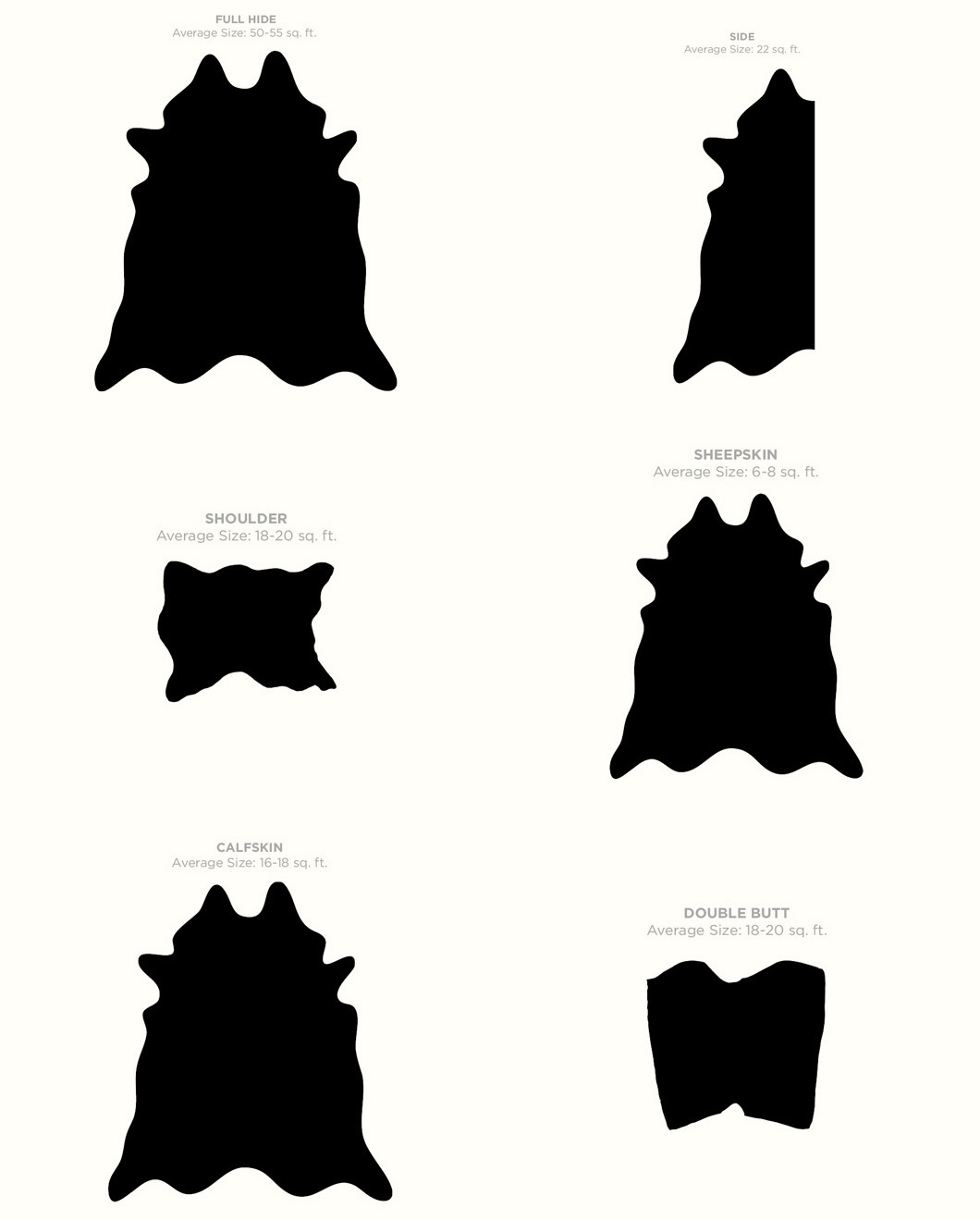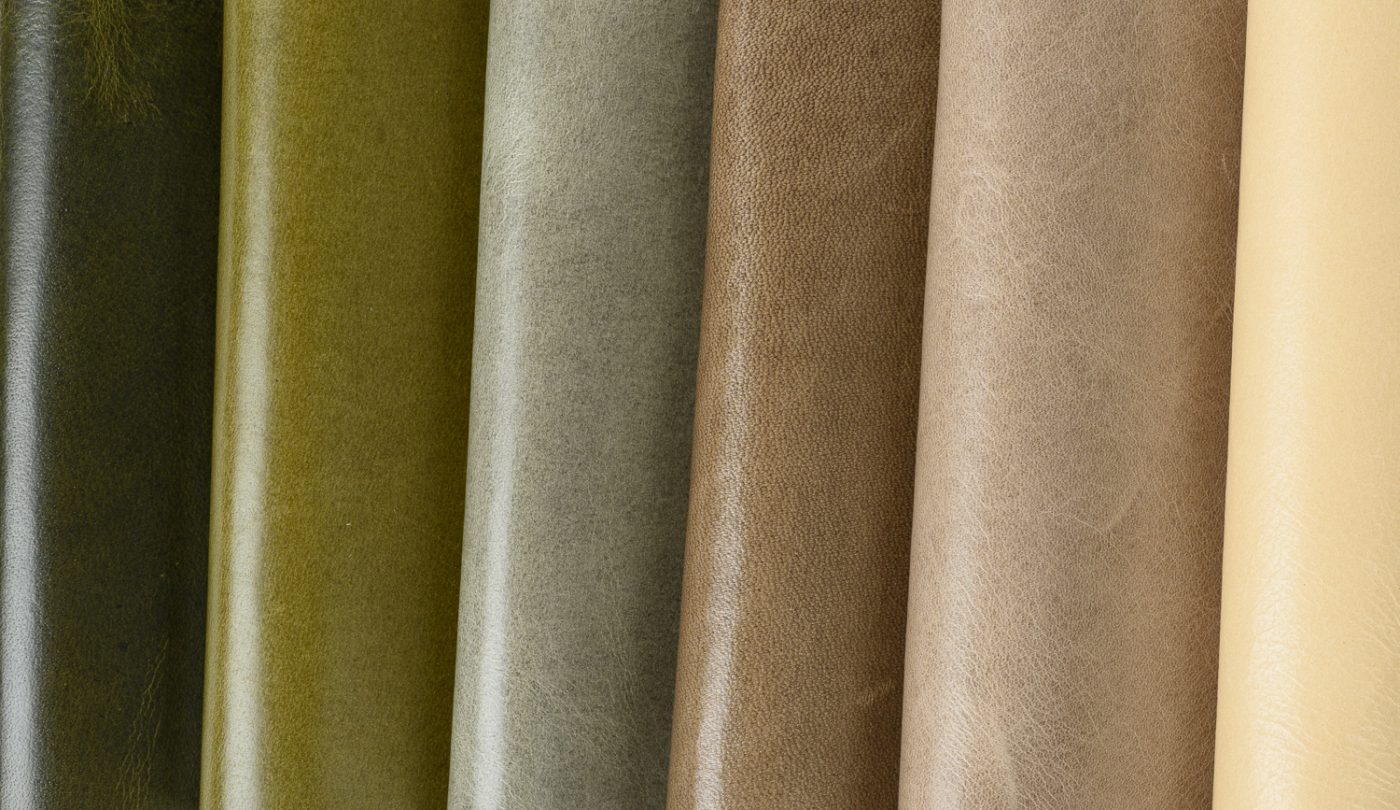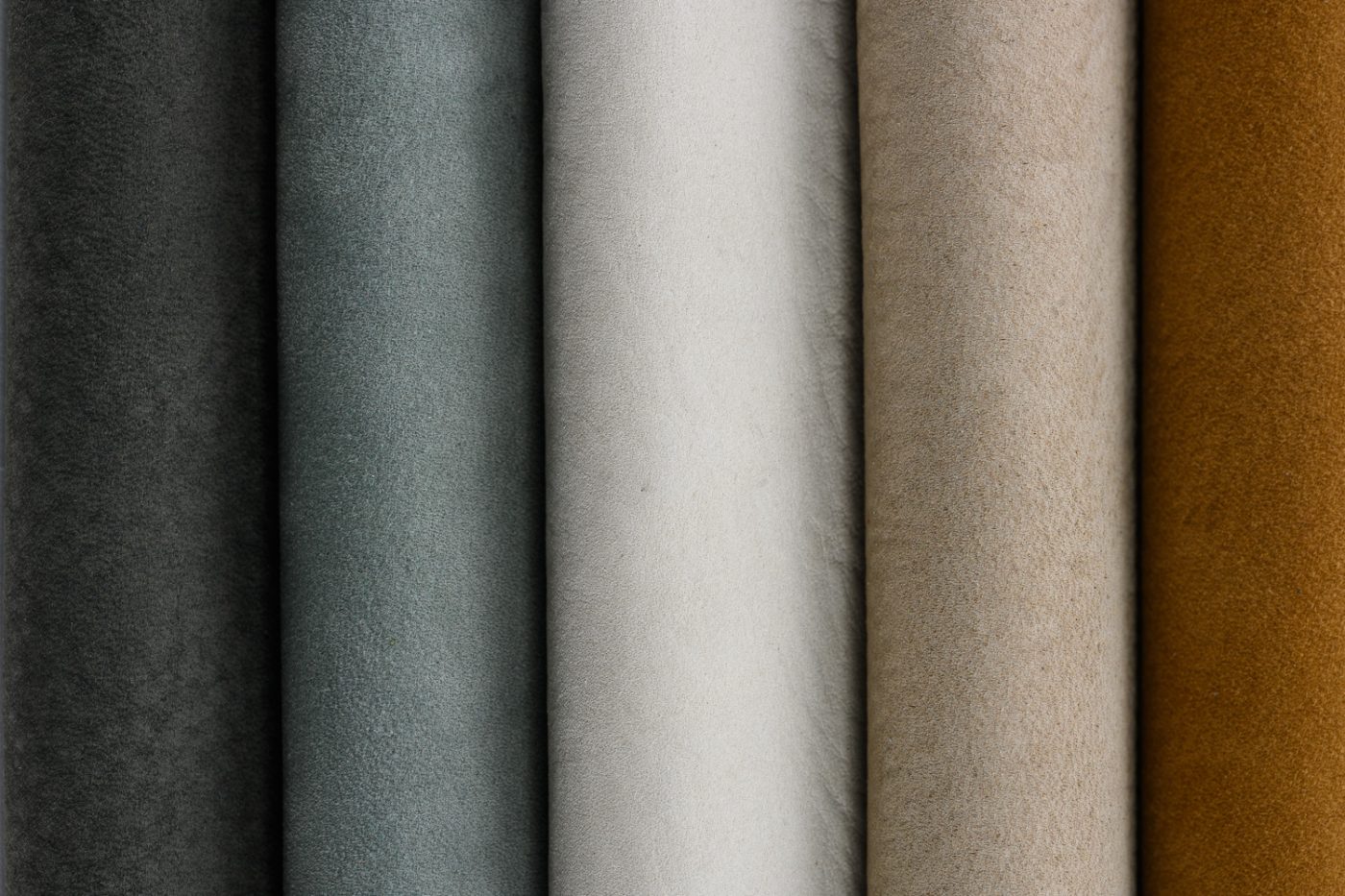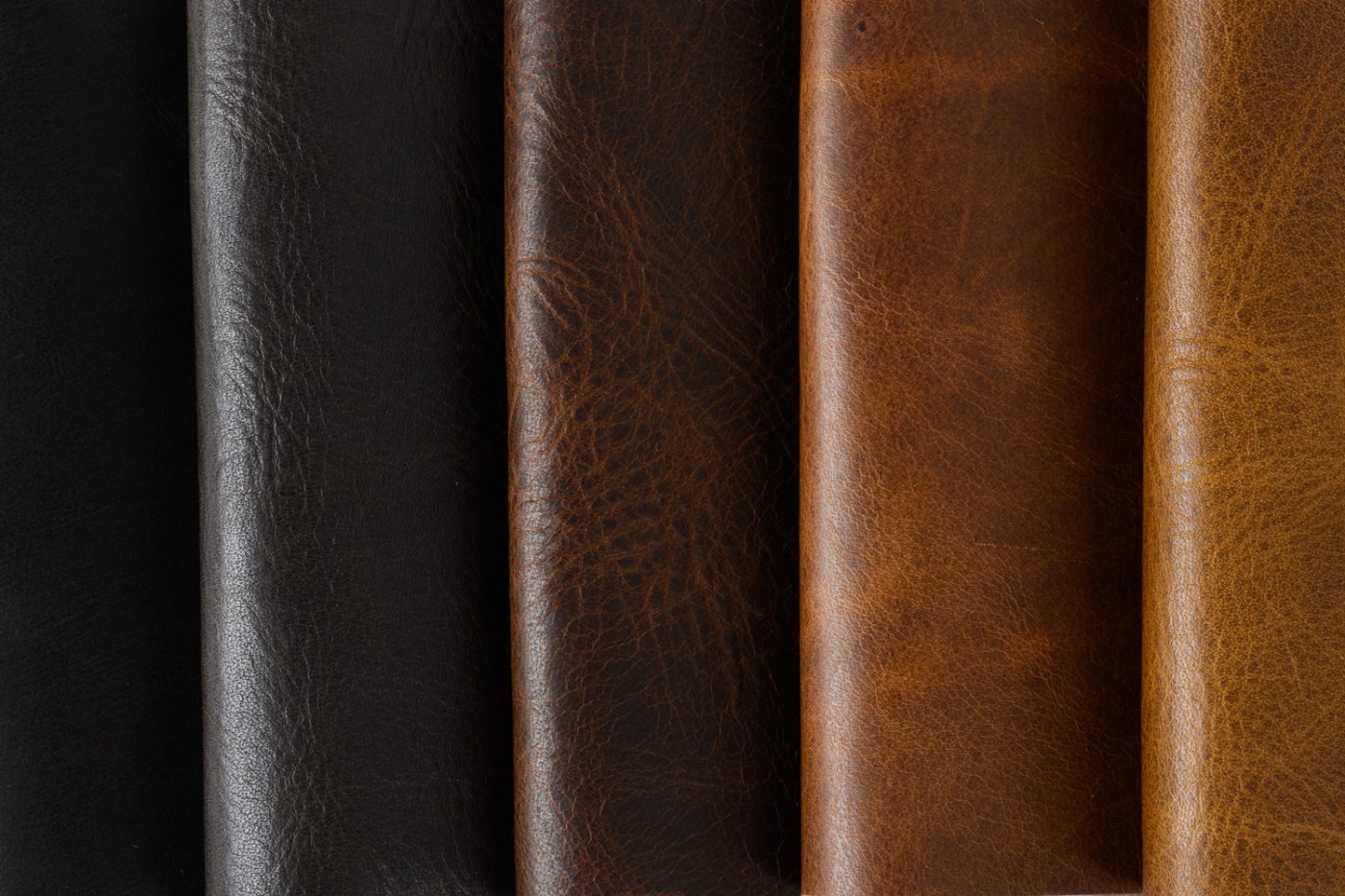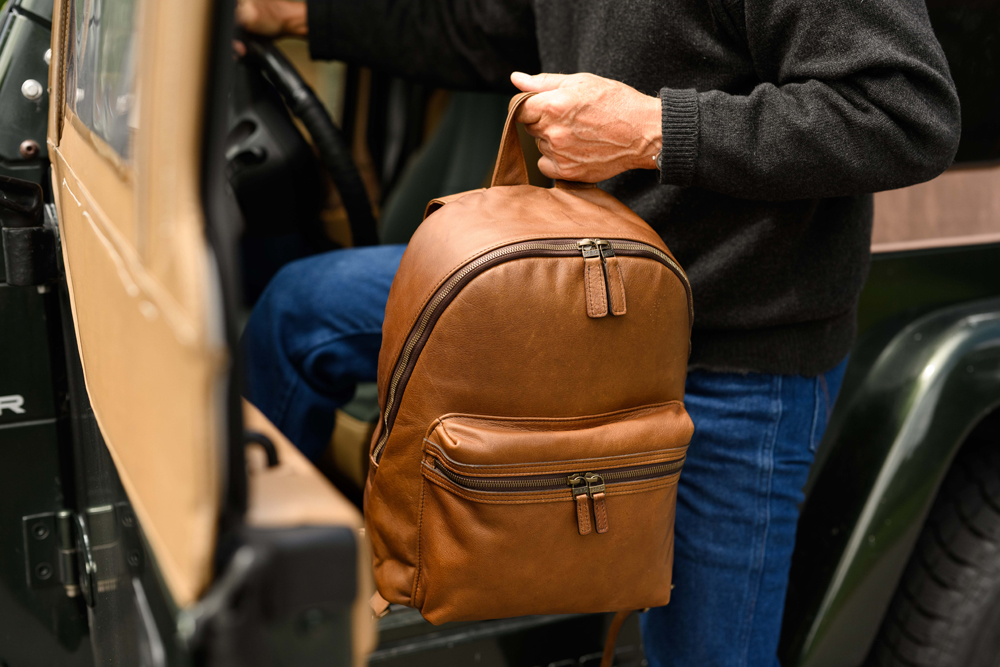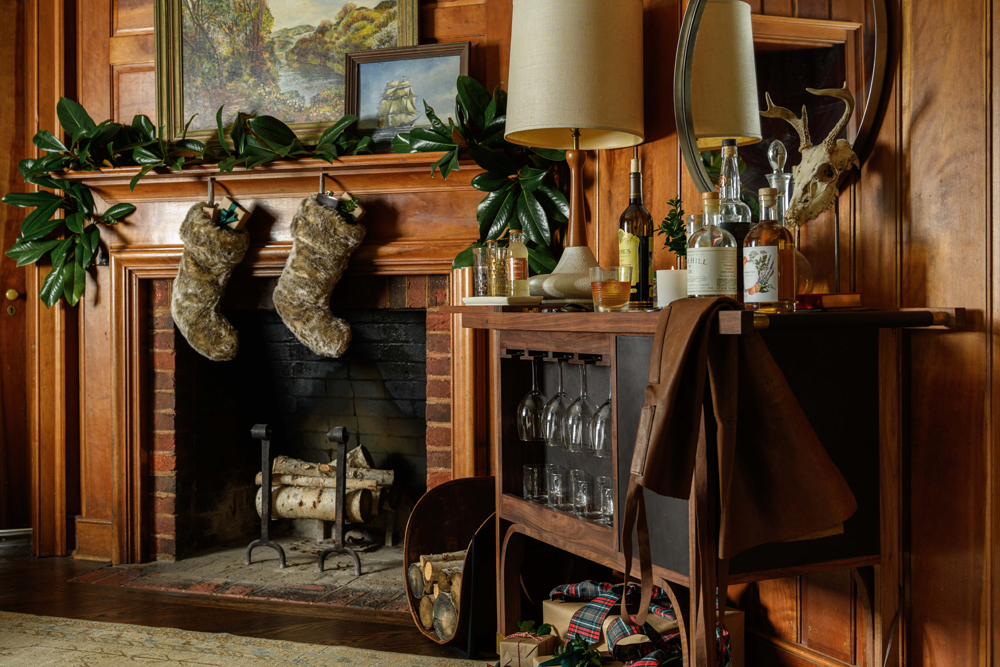Since leather is a natural material and each hide is unique, these dimensions represent average hide sizes and shapes.
The industry-wide formula for converting fabric yardage to leather square footage is one linear yard of 54”wide fabric equals 18 square feet of leather, based on hides averaging 50 to 55 s.f. Due to the irregular shape of the hides, there will always be a certain amount of waste; this formula takes waste into account. When using hides smaller than 50 s.f., the manufacturer or upholsterer should be consulted to determine whether more leather is required due to decreased yield from smaller hides and/or whether seams will be necessary to upholster the piece.
Generally speaking, a typical cow hide is about six feet long from neck to butt and four feet wide at the middle of the hide. Of course, it’s in the shape of a cow and more importantly every hide is different. This is leather, a natural product that unlike fabric, doesn’t come in a roll.
Moore and Giles offers six different hide varieties. Following are diagrams and average hide sizes for each type:
